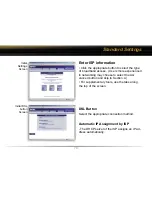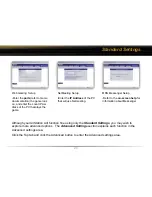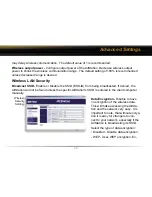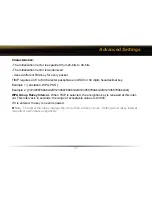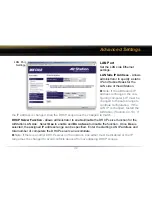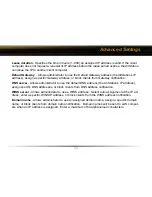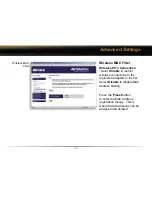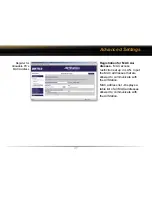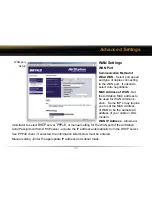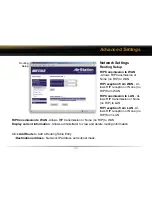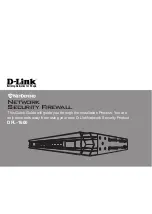
30
cryption key should be entered.
- TKIP - Uses TKIP (Temporal Key Integrity Protocol) for data encryption.
The encryption key is renewed every “Re-key interval” when “TKIP” is selected.
WEP -
When the WEP (Wired Equivalent Protection) encryption standard is implemented into a
wireless network, a WEP key is used between the client and access point to successfully encrypt,
transmit and decrypt data. For this reason, the same WEP key must be used for communication
between the client and the AirStation.
An access point and client may both carry multiple WEP keys. It is necessary for not only the WEP
keys to match, but also the WEP key’s order. If a wireless client cannot support multiple WEP keys,
the AirStations must be configured to transmit key number 1 for a connection to take place.
Examples of WEP key:
64-bit ASCII: 5 digits of alphanumeric characters, “ab34Y”
128-bit ASCII: 13 digits of alphanumeric characters, “123456abcdef7”
■
Note: ASCII WEP keys are case sensitive.
64-bit HEX: 10 digits, using characters 0-9 and a-f, “00234ABCDE”
128-bit HEX: 26 digits, using characters 0-9 and a-f, “20123456789abcdeabcdeabcde”
TKIP -
TKIP (Temporal Key Integrity Protocol) is a WEP expanded encryption technique. TKIP has
greatly improved WEP’s weaknesses by rotating secret keys between every packet. TKIP uses
WPA-PSK (pre-Shared Key).
Advanced Settings

